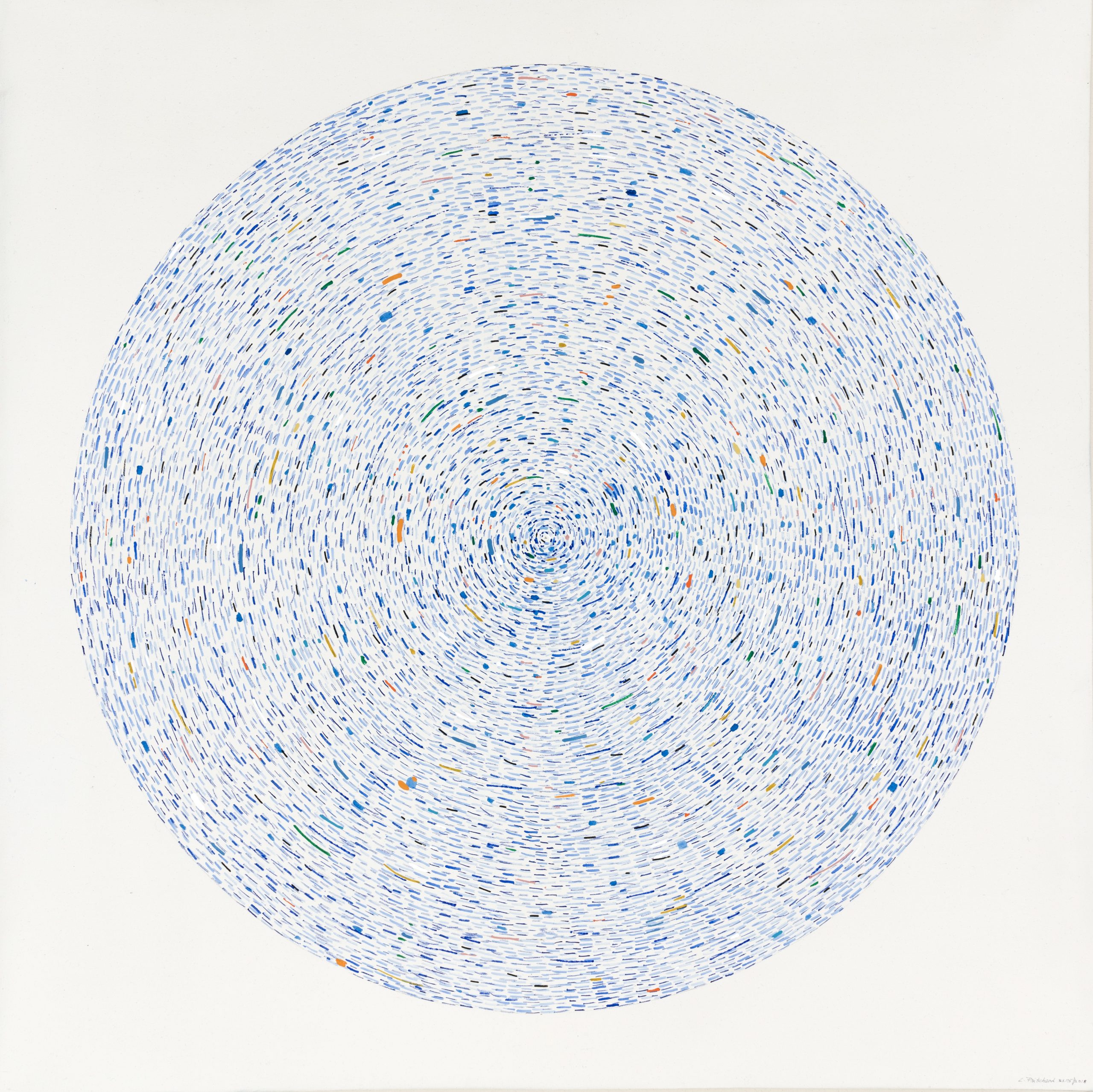Accounts of the meteoric rise, captivating claims, and mysterious public execution of the Báb—born 200 years ago in Shíráz, Iran—not only made a profound impression on the land of His birth, but also much further afield. From the distant reading rooms of Indian and English seats of learning to the salons of Paris’s Left Bank, writers and artists were enthralled by the tragedy of the Báb’s life and the appalling treatment meted out to His followers by the fanatical authorities of the time. This concise survey explores how this particular episode in humanity’s religious history resonated so strongly through the decades that followed.
OBSERVERS OF THE BÁBÍ MOVEMENT
During the nineteenth century, exotic stories and images from the Orient exerted a peculiar fascination on European minds. There were those, such as the British statesman Lord Curzon, who were impelled to make the journey east, motivated by imperialist ambitions. Others, however, including the decidedly anti-imperialist Edward Granville Browne of Cambridge University, genuinely identified with the cultures they discovered and returned with a new understanding of the potentialities of the peoples they encountered. One writer has maintained that the political theme of Europe regenerating a lifeless Asia had its literary and artistic counterpoint in the thought that the less sophisticated world overseas might be able to rejuvenate a greying Europe.
1Philip Darby, Three Faces of Imperialism, Britain and American Approaches to Asia and Africa 1870–1970 (New Haven: Yale University Press, 1987), p. 51.
The Comte de Gobineau’s Religions et Philosophies dans l’Asie Centrale (1865)—with its obvious parallels drawn between the life and martyrdom of the Báb with that of Jesus Christ—was the most influential volume in carrying the story to Western minds. The English poet and cultural critic Matthew Arnold, in A Persian Passion Play, wrote that the chief purpose
of Gobineau’s book was to give a history of the career of Mirza Ali Mahommed…the founder of Bâbism, of which most people in England have at least heard the name.
2Matthew Arnold, A Persian Passion Play, Essays in Criticism (London: Macmillan, 1884), p. 668. The notion that most people in England,
in Arnold’s view, were aware of the Báb indicates how deeply His fame had penetrated into far-off societies.
An encounter with Gobineau’s text also launched Browne on his quest. His only visit to Iran in 1887–88, recounted in A Year Amongst the Persians (1893), lit a fire which…would prove inextinguishable.
3A. J. Arberry, Oriental Essays, Portraits of Seven Scholars (Oxford: Oxford University Press, 1960), p. 171. The memoir of his sojourn did much to familiarize English readers with the Báb, His gentleness and patience, the cruel fate which had overtaken him, and the unflinching courage wherewith he and his followers, from the greatest to the least, had endured the merciless torments inflicted upon them by their enemies.
4Edward Granville Browne, A Year Amongst the Persians (London: A. C. Black, 1950), p. 330.
A. L. M. Nicolas, a French scholar born in Iran, was also intrigued by Gobineau’s work. Nicolas’s research, encompassing translations of several of the Báb’s major Writings, additionally contributed much to raising awareness of His life and teachings: My reflections on [The Seven Proofs by the Báb] that I had translated, filled me with a kind of intoxication and I became, little by little, profoundly and uniquely a Bábí. The more I immersed myself in these reflections, the more I admired the greatness of the genius of him who, born in Shíráz, had dreamt of uplifting the Muslim world…
5A. L. M. Nicolas, cited in Moojan Momen, The Bábí and Bahá’í Religions 1844–1944: Some Contemporary Western Accounts (Oxford: George Ronald Publisher, 1981), p. 37. Nicolas maintained a lifelong admiration for the Báb, concluding: Poor great Prophet, born in the heart of Persia, without any means of instruction, and who, alone in the world, encircled by enemies, succeeds by the force of his genius in creating a universal and wise religion…. I want people to admire the sublimity of the Báb, who has, moreover, paid with his life, with his blood, for the reforms he preached.
6Ibid., p. 38.
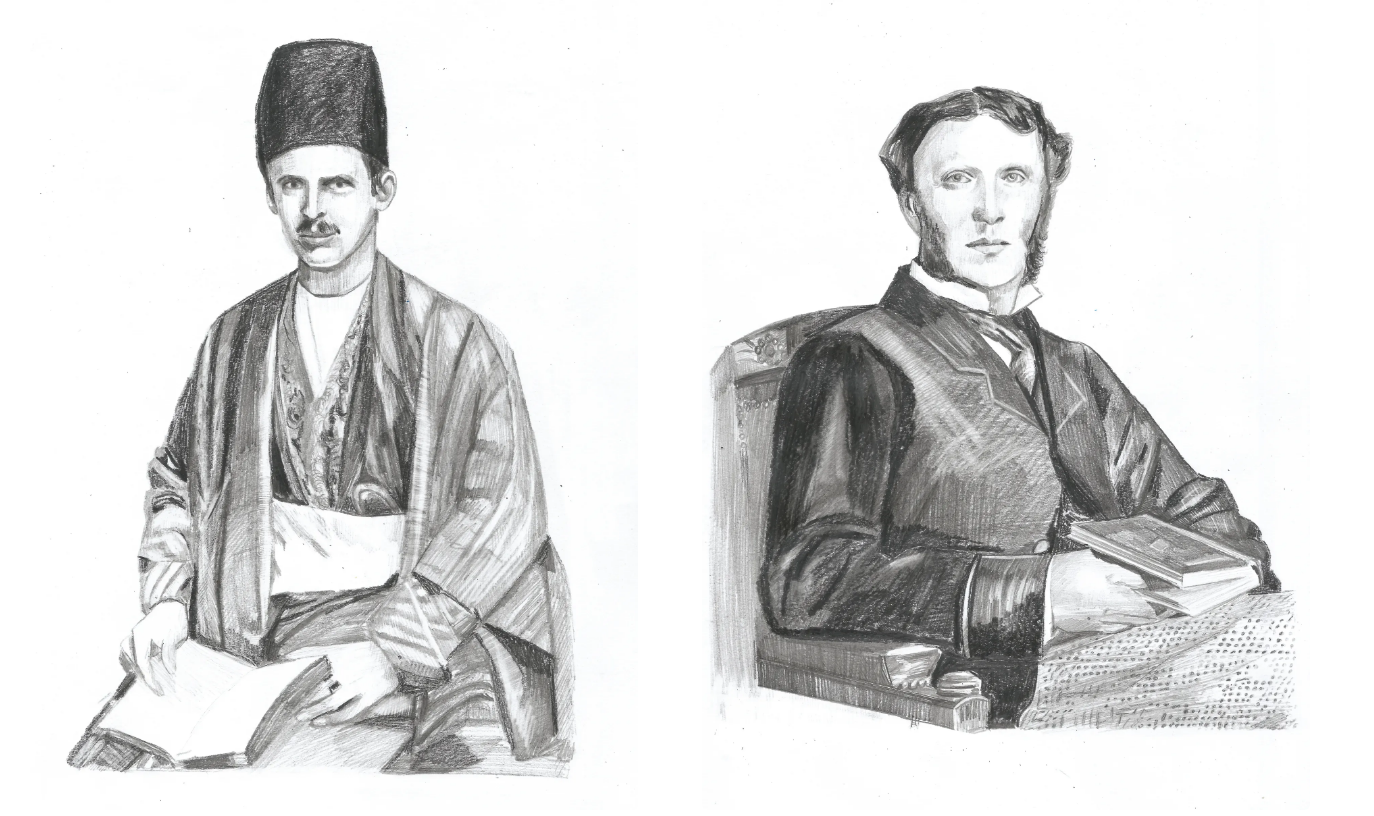
Credit: Simina Boicu
POETIC RESPONSES IN IRAN
The power of the written or spoken word is given great emphasis in the Bábí and Bahá’í scriptures. The Báb Himself cited a tradition, Treasures lie hidden beneath the throne of God; the key to those treasures is the tongue of poets.
7Nabíl-i-A’ẓam (Muḥammad-i-Zarandí). The Dawn-Breakers: Nabíl’s Narrative of the Early Days of the Bahá’í Revelation (Wilmette, Ill.: Bahá’í Publishing Committee, 1932), pp. 258–59. Among the early followers of the new faith were such distinguished poets as Táhirih, Varqá, Na’ím, and ‘Andalíb.8Baydá’í’s Memoir of the Poets of the First Bahá’í Century contains biographical notes about, and examples of work by, no fewer than 134 Bábí and Bahá’í poets.
Accounts of the Bábís generated an almost immediate response from writers in Iran itself. Mírzá Habíb-i-Shírází, known as Qá’iní, one of the country’s most eminent poets, was reportedly the first to extol the Báb in his work.9Nabíl-i-A’ẓam, The Dawn-Breakers, p. 258. Footnote 1. The news of more than 300 Bábís under siege at the Shrine of Shaykh Tabársí who, despite their lack of military expertise, held off the forces of the Sháh’s army for almost a year—notably aided by an exceptionally devastating display of swordsmanship by the Báb’s first follower Mullá Ḥusayn, who was but a religious scholar—evoked the enthusiasm of poets who, in different cities of Persia, were moved to celebrate the exploits of the author of so daring an act. Their poems helped to diffuse the knowledge, and to immortalize the memory, of that mighty deed.
10Nabíl-i-A’ẓam, The Dawn-Breakers, p. 333. In the West, reports of the beleaguered Bábís were extensively covered by the press11In an ongoing study, Jan Teofil Jasion has recorded 1380 articles for the years between 1845 and 1859. By the end of December 1845, more than 50 articles had been published in newspapers throughout Britain, France and the United States of America. By 1857, newspaper reports were printed in practically every capital city in Western Europe and as far afield as Java, Puerto Rico, the Bahamas, Hawaii and Canada., as well as described in travelogues by Robert Binning, Lady Sheil, and Jane Dieufloy.
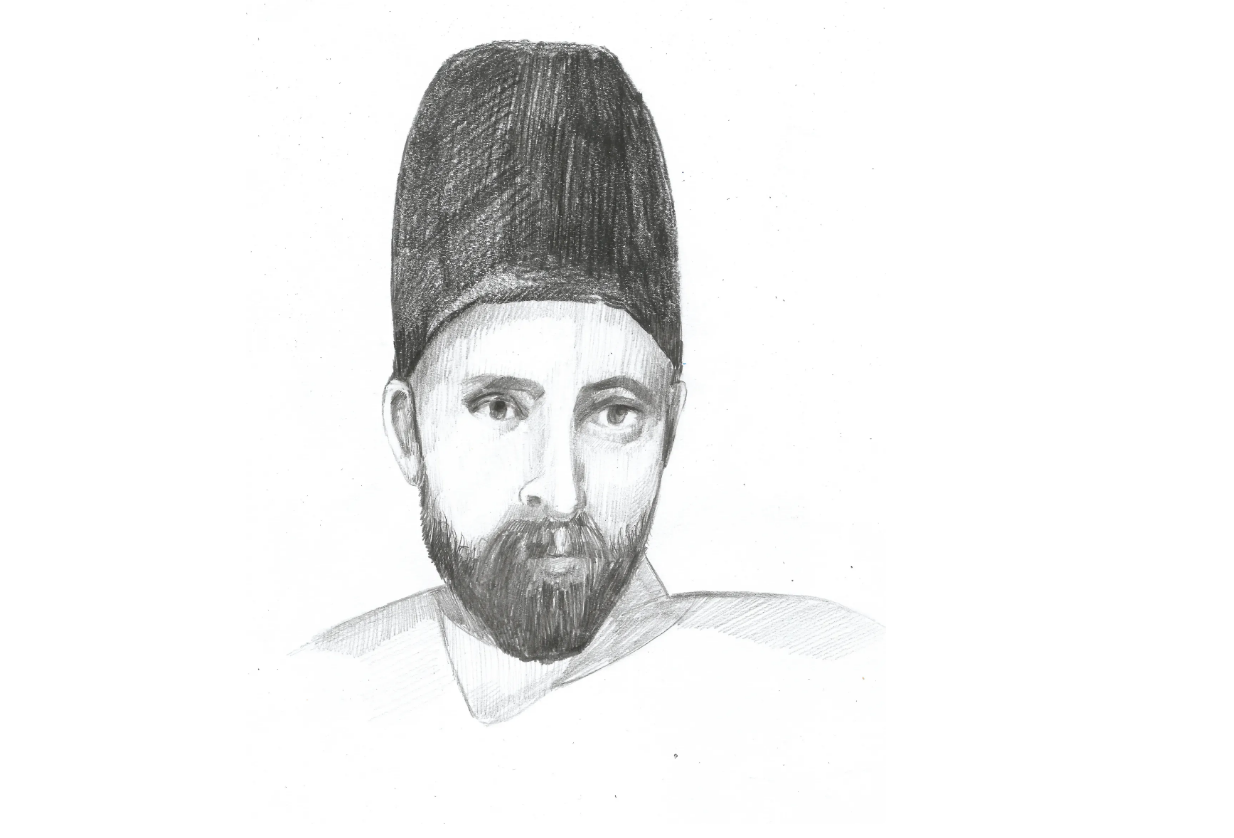
Credit: Simina Boicu
TÁHIRIH, QURRATU’L-‘AYN
The poet known as Táhirih, or Qurratu’l-‘Ayn, the first woman to follow the Báb, was rare among her gender at that time for her education and erudition. This ghazal, known as her signature piece, conveys her yearning devotion to the Beloved:
I would explain all my grief
Dot by dot, point by point
If heart to heart we talk
And face to face we meet.
To catch a glimpse of thee
I am wandering like a breeze
From house to house, door to door
Place to place, street to street.
In separation from thee
The blood of my heart gushes out of my eyes
In torrent after torrent, river after river
Wave after wave, stream after stream.
This afflicted heart of mine
Has woven your love
To the stuff of life
Strand by strand, thread to thread.12Táhirih, cited in Farzaneh Milani, Veils and Words: The Emerging Voices of Iranian Women Writers (London: I. B. Tauris, 1992).
More than any other element of the Bábí experience, it was the resolve and courage of Táhirih that seems to have excited the imagination of writers. Numerous volumes have been written about her—notably recalling her singular act of publicly removing her veil—not only in Persian, Arabic, and English but extensively in Urdu. Around 1870, after Bábís travelled to Mumbai, Táhirih’s story and poetry came to be well-known in the Indian sub-continent. The influential Punjabi-born poet, politician and philosopher Allama Muhammad Iqbal listed Táhirih among those whose songs bestow constancy to the souls because their songs derive their heat from the universe of inner-heat.
13Sabir Afaqi, Qurratu’l-’Ayn Táhirih in Urdu Literature, in Táhirih in History: Perspectives on Qurratu’l-Ayn from East and West, ed. Sabir Afaqi and Jan Teofil Jasion (Los Angeles: Kalimát Press), 2004, p. 31. In his Javid Nama (1932), Iqbal lists Táhirih as one of three martyr-guides.
Think you not Táhirih has left this world.
Rather she is present in the very conscience of her age.14Muhammad Iqbal, cited in Ibid., p. 31.
In Europe, as early as 1874, an Austrian novelist and women’s rights activist Marie von Najmajer, had written an epic poem, Gurret-ül-Eyn, believed to be the first composed in a Western language in honor of the new religion. Four years later, William Michael Rossetti mentioned both the Báb and Táhirih in a lecture given in various cities about the English poet Shelley.15William Michael Rossetti, in The Dublin University Magazine, (February/March 1878). Rossetti observed that Táhirih had an almost magical influence over large masses of the population,
16Ibid. and that the protagonists of Shelley’s poem, The Revolt of Islam, anticipate both her life and that of the Báb. In this work, Shelley seems to have captured the spirit of expectation of that time, foreseeing the imminent advent of two Divine beings:
And a voice said: Thou must a listener be
17Percy Bysshe Shelley, The Revolt of Islam (London: C. and J. Oliver, 1818), Canto I: LVIII.
This day—two mighty Spirits now return,
Like birds of calm, from the world’s raging sea,
They pour fresh light from Hope’s immortal urn;
A tale of human power—despair not—list and learn!
Explaining the significance of a verse from Háfiz, the Báb had said, It is the immediate influence of the Holy Spirit that causes words such as these to stream from the tongue of poets the significance of which they themselves are often times unable to apprehend.
18Nabíl-i-A’ẓam, p. 259. In similar vein, Shelley had not long before declared that poets are the hierophants of an unapprehended inspiration, the mirrors of the gigantic shadows which futurity casts upon the present, the words which express what they understand not; the trumpets which sing to battle and feel not what they inspire….
19Percy Bysshe Shelley, cited in Shelley’s Poetry and Prose, ed. Donald Reiman and Sharon Powers (New York: W. W. Norton, 1977). The creative forces that accompany the pronouncements of a Manifestation of God—or even anticipate them—thus appear to prompt the spiritual sensibilities of receptive souls.
Throughout the twentieth century, Táhirih’s fame spread further abroad. The journalist and outstanding Bahá’í teacher Martha Root, who penned a monograph about her, noted that, As I have travelled in the five continents, I have seen how her life has influenced women, and men too, throughout the world.
20Martha Root, Táhirih the Pure (Los Angeles: Kalímat Press, 1981), p. 43. A 1960 public sculpture in Baku, Azerbaijan, by Fuad Abdurrahmanov, depicting a woman casting aside her veil, is said to have been inspired by Táhirih.21See https://news.bahai.org/story/1150/ And, as recently as in 2017, Azerbaijan’s National Museum of History held a celebration recognizing Táhirih’s dedication and contribution to the advancement of women. Táhirih is held in high regard,
explained Professor Azer Jafarov of Baku State University. She influenced modern literature, raised the call for the emancipation of women, and had a deep impact on public consciousness.22Ibid.
Around the same time that Táhirih made her appearance unveiled at the Conference of Badasht in June–July 1848, the first women’s rights convention in the United States was being held at Seneca Falls, at which was launched the women’s suffrage movement in America. In the estimation of Western women, the acts of Táhirih were interpreted through the lens of their campaign for the right to vote. In Britain in 1911, the Women’s Freedom League newspaper ran a three-part article by campaigner Charlotte Despard titled, A Woman Apostle in Persia.
23Despard, Charlotte, A Woman Apostle in Persia, The Vote, Vol. IV No.101. 30 September 1911: pp.280-1. When an English Bahá’í, Mary Blomfield, petitioned King George V in person to ease the maltreatment of imprisoned suffragettes, an American Bahá’í dubbed her the Western Qurratu’l-Ayn.
24Letter from Joseph Hannen to Lady Blomfield, 7 September 1914. United States Bahá’í Archives.
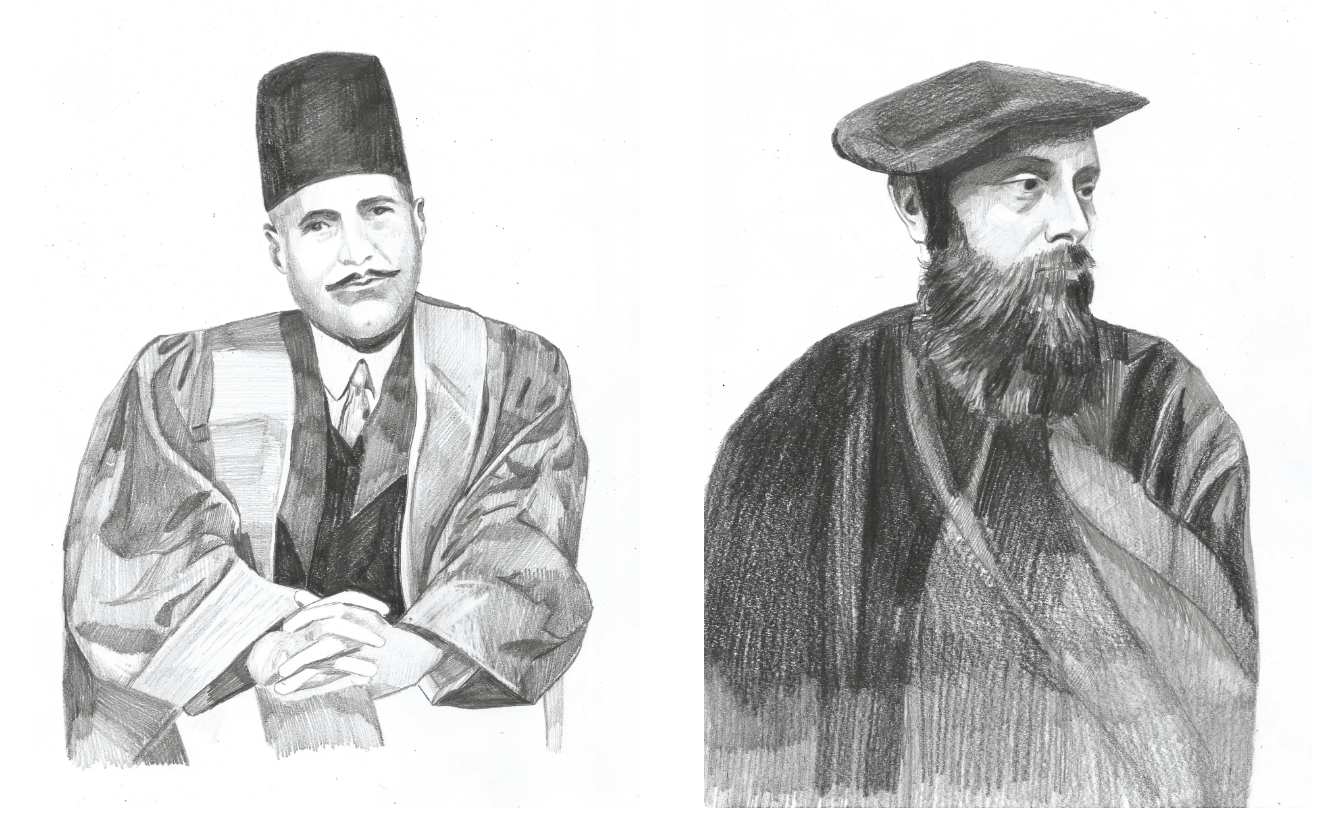
Credit: Simina Boicu
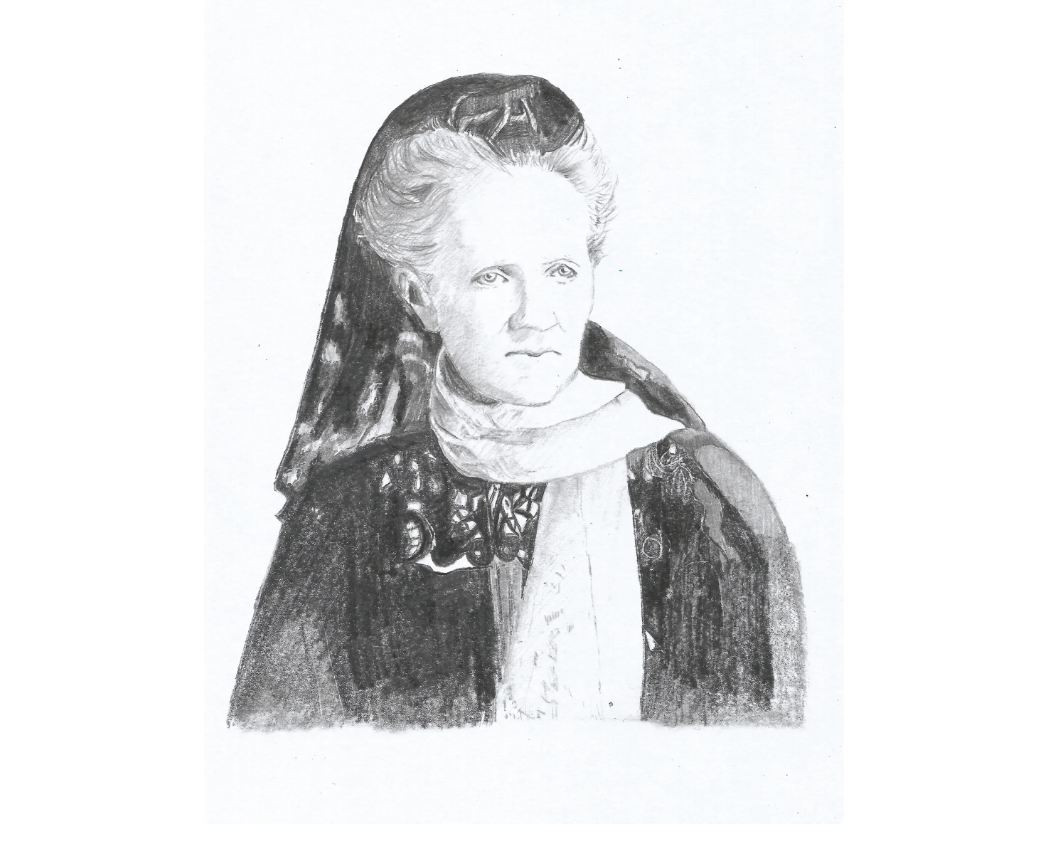
Credit: Simina Boicu
THE SALONS OF PARIS
The first European novel that was set against the episode of the Báb was published in France 1891. In Un Amour au Pays de Mages, A. de Saint-Quentin—a French consular official and colleague of Gobineau’s—created a love story between a humble dervish and the daughter of a cleric in Qazvín played out amid the events of Bábí history.
Writer Jules Bois had also been so moved by the story of events in faraway Iran that, during a journey through the Holy Land, he had stopped at Mount Carmel to place flowers on the tomb of the Báb.
25Jan Teofil Jasion, ‘Abdu’l-Bahá in France 1911 & 1913 (Paris: Éditions bahá’íes France, 2016), p. 189.
Writing in 1925, Bois recalled that, All Europe was stirred to pity and indignation over the martyrdom of the Báb, July 9 1850 … among the littérateurs of my generation, in the Paris of 1890 the martyrdom of the Báb was still as fresh a topic as had been the first news of his death. We wrote poems about him. Sarah Bernhardt entreated Catulle Mendès for a play on the theme of this historic tragedy …. I was asked to write a drama entitled Her Highness the Pure, dealing with the story of another illustrious martyr of the same cause—a woman, Quarratul-Ayn [sic] the Persian Joan of Arc and the leader of emancipation for women of the Orient.
26Jules Bois, cited in ibid.
Neither of the proposed plays of Mendès or Bois materialized. However, Bois did meet ‘Abdu’l-Bahá in Paris on 11 November 1911, at the home of composer Hermann Bemberg, where they performed extracts from an opera they had co-written with Eustache de Lorey, titled Leïlah. Set in Shíráz, the opera contained many references to mystical Persia. It was staged in Monaco three years later.27Jan Teofil Jasion, ‘Abdu’l-Bahá in France 1911 & 1913.
In 1910, the Paris-based American heiress Laura Clifford Barney—who would be active in the International Council of Women in the following decades and its representative to the League of Nations—had published her own, never performed, drama, God’s Heroes, centering on Táhirih. In its preface, Barney described her play as but a fragment of one of the most dramatic periods in history and … but a limited presentation of the most vast philosophy yet known to man.
The theatre, like all other forces may upbuild or shatter. It can be a mighty instrument for spreading ideas broadcast; and, for this reason, I believe that the wave of regeneration, which is sweeping over the world, should take form also on the stage; and am trying, therefore, in this play, to bring before the public some of the most inspiring events of our epoch.
I have, therefore, presented to the public a few episodes in the early Babi history, and only a few of the noted characters of that period: yet, even this imperfect sketch should suffice to give an idea of the vastness of the movement.28Laura Clifford Barney, God’s Heroes (London: Kegan Paul, Trench, Trübner, 1910), p. v–vi.
Barney thought it preferable
not to portray the Báb or Bahá’u’lláh in any way for certain beings cannot be adequately impersonated.
However there is no such self-restriction in her depiction of Táhirih, who stands forth in history as an example of what the disciple of truth can accomplish despite hampering custom, and violent persecution.
29Ibid., p. viii.
At one moment in the play, Barney gives to Táhirih words that proclaim the advent of a new Revelation:
From all sides I see new life rising; the struggle between the hardened soil and the maturing seed is over. Soon, upon all things, summer will spread victorious beauty!
… even the end has a beginning for spring will again conquer, sister mine. So, when, as now, ancient faiths have become rigid in cold dead forms, a new faith germinates in the souls of men.30Ibid. p. 17.
By then a devoted Bahá’í herself, Barney’s intention in presenting this history on stage was made clear to her readers at the outset: … I hope, notwithstanding, to give you a glimpse of Eastern glory, and to awaken your interest in this great movement, the universal religion—Bahaism, which is today bringing peace and hope to expectant humanity.
31Ibid. p. viii.

Credit: Simina Boicu
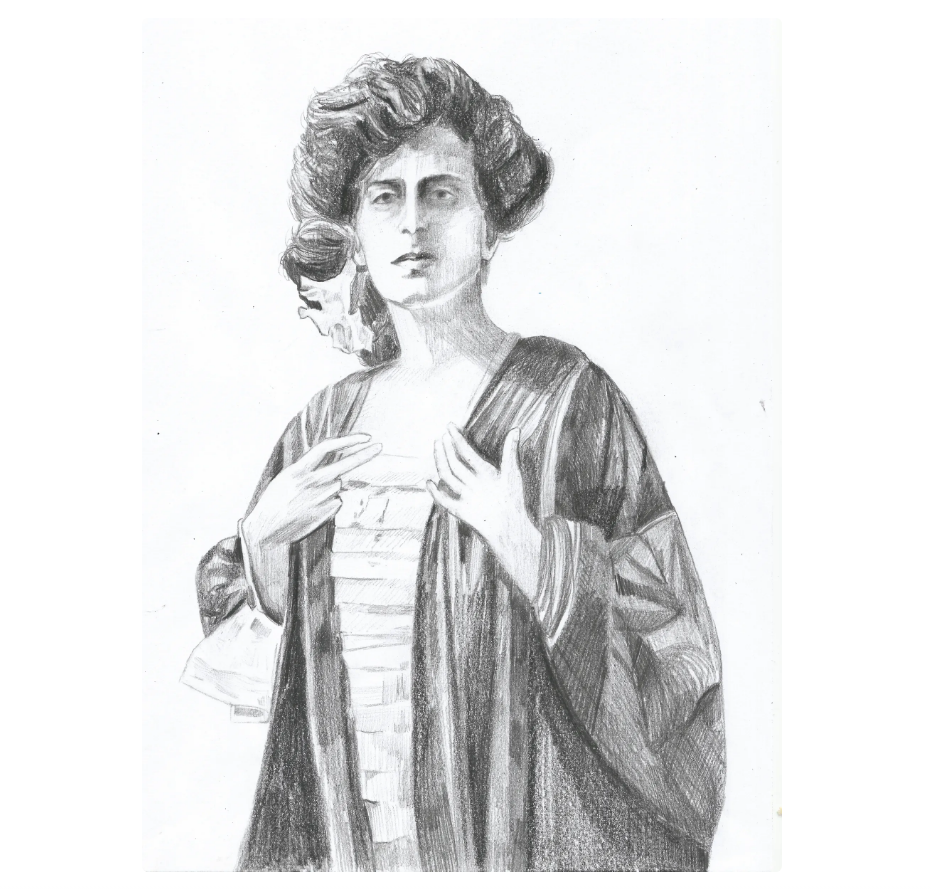
Credit: Simina Boicu
A RUSSIAN STAGE DRAMA
In God Passes By, published in 1944 to mark the centenary of the Declaration of the Báb, Shoghi Effendi recorded for posterity another piece of theater:
A Russian poetess, member of the Philosophic, Oriental and Bibliological Societies of St. Petersburg, published in 1903 a drama entitled The Báb,
which a year later was played in one of the principal theatres of that city, was subsequently given publicity in London, was translated into French in Paris, and into German by the poet Fiedler, was presented again, soon after the Russian Revolution, in the Folk Theatre in Leningrad, and succeeded in arousing the genuine sympathy and interest of the renowned Tolstoy, whose eulogy of the poem was later published in the Russian press.32Shoghi Effendi, God Passes By (Wilmette: Bahá’í Publishing Trust, 1999), p. 56.
The drama was penned by Izabella Grinevskaia, who probably first encountered the story of the Báb while researching in a St. Petersburg academic library. Several Russian scholars—including Aleksander Kazembeg, Albert Dorn, Captain A. M. Tumansky and Baron Victor Rozen—had published articles about the Báb. Published in April 1903, Grinevskaia’s play, received favorable reviews in the press, some of which quoted from it at length. One noted that the story could move a Russian as well as a Persian. It is almost strange that in our literature no-one has come to write about such a wonderful, true-to-life tragedy.
33Jan Teofil Jasion, Táhirih on the Russian Stage, in Táhirih in History, p. 233. First seen in St. Petersburg on 4 January 1904, the work conveyed its message of peace, love, tolerance, and brotherhood so successfully that, after four performances, it was banned for five years by the Tsar’s censor. It was, however, performed in Baku on 28 April and Astrakhan during the first week of December 1904. A second edition was published in 1916 and staged the following year. In 1922 the last recorded staging took place in Ashgabat in Turkmenistan.
Among those who praised Grinevskaia’s play was Leo Tolstoy. A Russian journalist visiting the great author in 1903, described finding Tolstoy deeply immersed in reading the drama
and was charged by him to give his admiring appreciation to it author.
34Moojan Momen, The Bábí and Bahá’í Religions 1844–1944. p. 51. But Tolstoy’s curiosity about the Báb preceded his receiving Grinevskaia’s text. In April 1899, for example, the poet Rainer Maria Rilke paid a visit to Tolstoy with the Russian psychoanalyst Lou Andreas-Salomé and her husband, the orientalist Friedrich Carl Andreas, who had published a paper about the Bábís. Salomé later reported that Tolstoy paid little attention to her and Rilke, rather his interest was more focused on deep and invigorating discussions about the Bábí movement
with her husband.35Sasha Dehghani, Die ‘persische Jeanne d’Arc’: Zum Nachleben einer Märtyrerin,, Trajekte (Berlin) nr.15 (Oktober 2007).
In a letter to Grinevskaia, Tolstoy wrote, I have known of the Bábís for a long time and am much interested in their teachings. It seems to me that they have a great future … because they have thrown away the artificial superstructures which separate [the religions] from one another and are aiming at uniting all mankind in one religion …. And therefore, in that it educates men to brotherhood and equality and to the sacrificing of their sensual desires in God’s service, I sympathise with Bábism with all my heart.
36Moojan Momen, The Bábí and Bahá’í Religions 1844–1944. p. 55.

Credit: Simina Boicu

Credit: Simina Boicu
RESPONSE IN THE TWENTIETH CENTURY
The Báb and His followers were thus a source of curiousity and inspiration to many writers, intrigued by His teachings and captivated by the heartbreak of their story. Later, as the Heroic Age
of Bahá’í history came to an end with the passing of ‘Abdu’l-Bahá in 1921, the Bahá’í Faith, under the direction of its Guardian, Shoghi Effendi, began to evolve into a distinct and independent, world-embracing religion, spreading to an ever-increasing number of territories. One of the reasons for Shoghi Effendi’s translation of The Dawn-Breakers: Nabíl’s Narrative of the Early Days of the Bahá’í Revelation was to give newer Bahá’ís in the West both a vivid introduction to the origins of their Faith, much of which was unknown to them, and an inspirational tool to encourage their own sacrificial services in the Faith’s progress. It was also the Guardian’s hope that The Dawn-Breakers would provide artists with source material for their work: It is surely true that the spirit of these heroic souls will stir many artists to produce their best. It is such lives that in the past inspired poets and moved the brush of the painters.
37Shoghi Effendi, cited in Extracts from the Bahá’í Writings on the Subject of the Importance of the Arts in Promoting the Faith, Compilation of Compilations Prepared by the Research Department of the Universal House of Justice, vol. 3 (Ingleside: Bahá’í Publications Australia, 2000), pp. 27–28.
In comparison to the outpouring of those early decades of literary responses to the Báb, general works inspired by the Bábí period may have dwindled for much of the 20th century. However, following the publication of The Dawn-Breakers up until today, Bahá’ís themselves have paid homage to the Báb and the heroes of Bábí history through countless works of art, poetry, theater, film, and music, in a wide range of languages and forms of cultural expression. Two American Bahá’ís who received widespread public acclaim in the pursuit of their art and deserve brief mention here, to exemplify how The Dawn-Breakers has impacted upon creative practitioners, are the painter Mark Tobey and the poet Robert Hayden.
When Tobey was on his second pilgrimage to the Holy Land in 1935, Shoghi Effendi told him that he was free to depict the early heroes of the Faith but not its Founders. Up until that time, some of the early western Bahá’ís who were painters had not attempted to illustrate any events from Bábí history, let alone attempt to convey more mystical concepts. Tobey, however, conversant with the moves toward abstraction in modernist European painting, found that his emerging visual language could be deployed not only for evoking historical events but also metaphysical ideas.
One of Tobey’s most explicit Bábí-inspired works is Movement Around a Martyr (1938). In it, he draws on his deep knowledge of renaissance art, especially the pietà figure of the martyred Christ, to depict the physical and spiritual forces that circle about a saintly figure who has been put to death. The entire image, which from a distance might be read as an all-seeing eye or maelstrom, spirals out of a small central circle, perhaps the Primal Point,
as the Báb described Himself, from which has been generated all created things.
38The Báb, Selections from the Writings of the Báb (Haifa: Bahá’í World Centre, 1982), p. 12. Swirling around the martyred figure, one lifeless arm hanging down, are mourners and worshippers, priests and helmeted guards, while more amorphous angelic figures circle above. In this work, Tobey draws an explicit parallel between the Bábí episode and the archetypal events from previous religious dispensations.
Meanwhile, in his poem, Dawnbreaker, the distinguished American poet Robert Hayden, who served from 1976 to 1978 as Consultant in Poetry to the U.S. Library of Congress, a role today known as U.S. Poet Laureate, takes as his inspiration the description of the humiliation of Hájí Sulaymán Khán, whose final punishment was to have holes gouged into his flesh into which were inserted burning candles:
Ablaze
with candles sconced
in weeping eyes
of wounds,
He danced
through jeering streets
to death; oh sang
against. The drumming
mockery God’s praise.
Flames nested in
his flesh
Fed the
fires that consume
us now, the fire that
will save.39Robert Hayden, Angle of Ascent (New York: Liveright, 1966), p. 80.
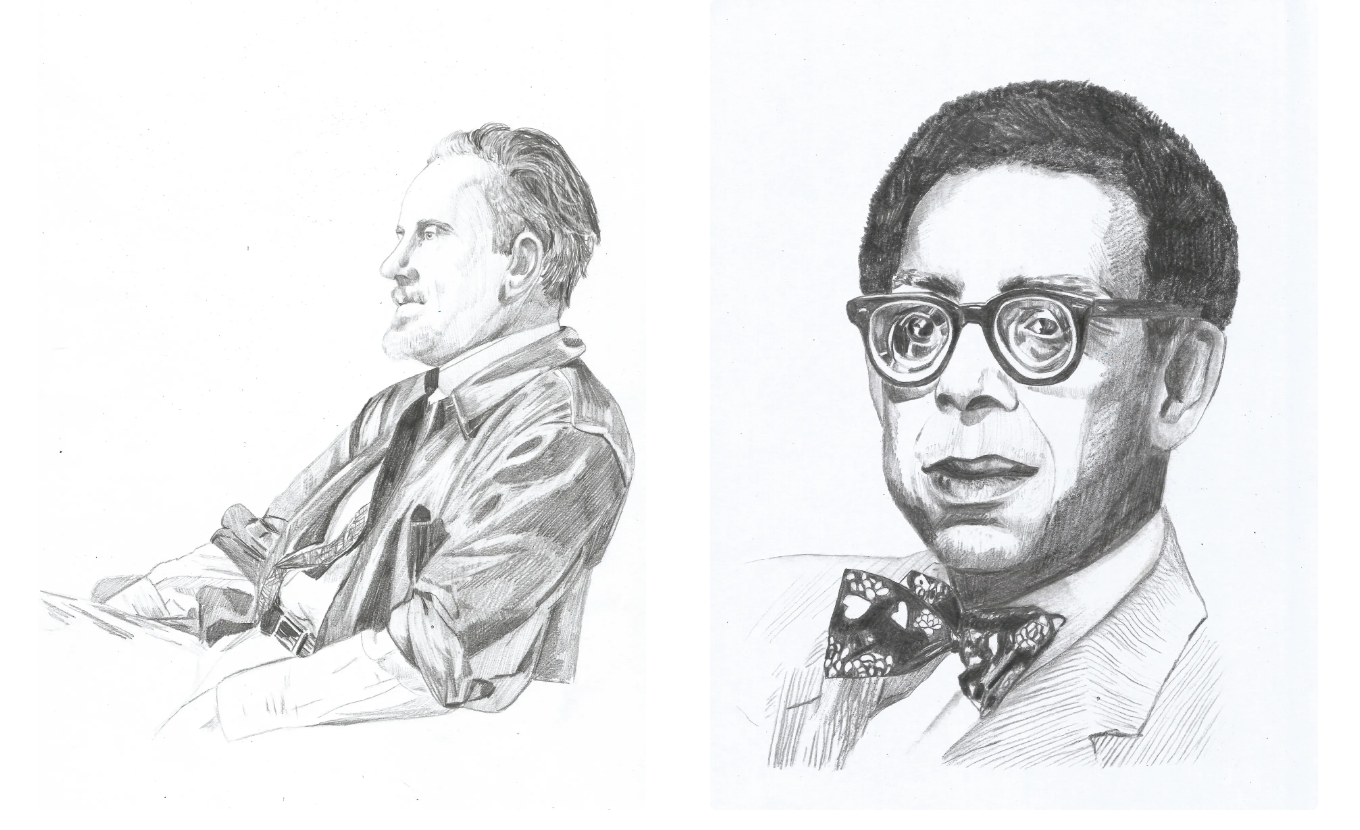
Credit: Simina Boicu
A CONTINUING STORY
There are two aspects to the story of the Báb—His captivating personal demeanor and the harsh treatment of His followers—that particularly seem to have sparked the imagination of writers and then later, artists. The English divine Thomas K. Cheyne recorded that the Báb’s combination of mildness and power is so rare that we have to place him in a line with super-normal men ….
40Thomas K. Cheyne, The Reconciliation of Race and Religions (London: Adam and Charles Black, 1914), p. 74. Curzon noted, that [t]ales of magnificent heroism illumine the bloodstained pages of Bábí history …. Of no small account, then, must be the tenets of a creed that can awaken in its followers so rare and beautiful a spirit of self-sacrifice.
41George N. Curzon, Persia and the Persian Question (London: Frank Cass, repr. 1966), p. 501.
To this day, the Báb continues to fascinate not only Bahá’ís around the world, but scholars of history and religion, artists, musicians, writers and dramatists. Anticipating the worldwide celebrations of both the bicentenaries of Bahá’u’lláh in 2017 and the Báb in 2019, the Universal House of Justice wrote:
At the heart of these festivities must be a concerted effort to convey a sense of what it means for humanity that these two Luminaries rose successively above the horizon of the world. Of course, this will take different forms in different contexts, extending to a myriad artistic and cultural expressions, including songs, audio-visual presentations, publications and books.42Universal House of Justice, To all National Spiritual Assemblies, 18 May 2016 (Bahá’í World Centre, 2016, mimeographed), p. 1.
The bicentenary of the Birth of the Báb in October 2019 did indeed give rise to an outpouring of artistic expressions from people on every continent, a sure reminder of the profound influence that the life and mission of the Báb is continuing to have, and will increasingly exert, on artistic expression worldwide.
Much then is still to be seen and heard, drawn and painted, spoken and sung, acted upon the stage, or captured on film—as humanity increasingly responds to the advent of a Divine Revelation and its martyred Prophet-Herald, Who fascinated contemporary commentators in the middle of the nineteenth century, and Who continues to speak to hearts and minds in the twenty-first.
